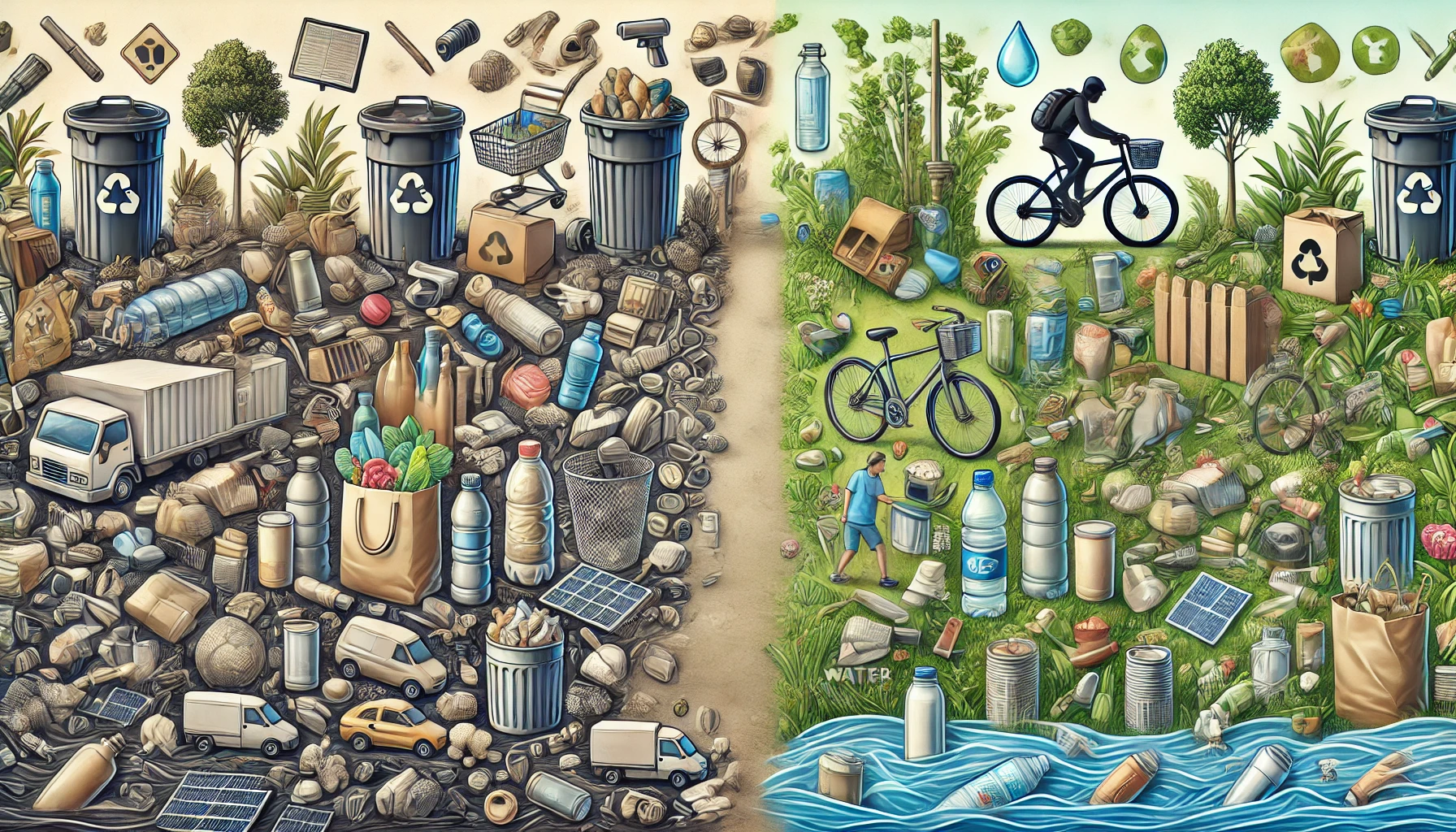Adopting sustainable resource-use practices in our daily lives is essential for reducing environmental impact and conserving resources. Small actions, like minimizing waste and opting for eco-friendly products, can collectively make a significant difference. This article outlines effective strategies for sustainable living and provides practical steps toward a greener lifestyle, backed by research from environmental organizations.
Reducing Single-Use Plastics
One of the most impactful changes we can make is to reduce single-use plastic. According to Greenpeace, millions of tons of plastic waste enter oceans each year, harming marine life and ecosystems (Greenpeace, 2023). Replacing plastic bags, bottles, and cutlery with reusable alternatives is an easy but powerful step in reducing plastic pollution. Many people now carry reusable bags, metal straws, and refillable water bottles as part of their daily routine, reducing the reliance on disposable items.
Conserving Water
Water conservation is critical, especially in areas facing water scarcity. The World Health Organization (WHO) reports that 1 in 3 people globally lack access to safe drinking water, emphasizing the need for responsible water use (WHO, 2022). Simple actions, like fixing leaks, taking shorter showers, and turning off taps while brushing teeth, can significantly reduce water consumption at home. Additionally, opting for water-efficient appliances can save thousands of gallons of water annually.
Energy Efficiency at Home
Using energy efficiently not only reduces bills but also lowers greenhouse gas emissions. According to the International Energy Agency (IEA), households account for a large portion of global energy consumption (IEA, 2022). Energy-efficient practices, like using LED bulbs, unplugging appliances when not in use, and setting thermostats to eco-friendly temperatures, help minimize energy waste. Additionally, adopting renewable energy sources, like solar panels, can further reduce the household carbon footprint.
Sustainable Transportation
Transportation contributes significantly to air pollution and greenhouse gas emissions. The Environmental Protection Agency (EPA) suggests that reducing car usage can lower individual carbon footprints (EPA, 2023). Opting for public transportation, carpooling, biking, or walking are all eco-friendly alternatives. For those who need to drive, electric and hybrid vehicles offer more sustainable options compared to traditional gasoline cars.
Practicing the 3Rs: Reduce, Reuse, and Recycle
The concept of “Reduce, Reuse, Recycle” is at the heart of sustainable resource use. By reducing consumption, reusing items, and recycling materials, we can reduce waste and conserve resources. The United Nations Environment Programme (UNEP) encourages individuals to be mindful of their consumption patterns and recycle materials such as paper, glass, and metal whenever possible (UNEP, 2021). For example, recycling a single ton of paper saves about 17 trees, underscoring the positive impact of recycling on the environment.
Conclusion: Small Steps, Big Impact
Sustainable resource use in daily life doesn’t require radical changes. By making conscious choices, like reducing plastic use, conserving water, using energy efficiently, choosing sustainable transportation, and practicing the 3Rs, we can collectively contribute to a healthier planet. Every action counts, and together, these small steps pave the way toward a more sustainable future.
References:
- Greenpeace. (2023). The Impact of Plastic Pollution on Marine Ecosystems.
- World Health Organization. (2022). Global Water Crisis and Access to Clean Water.
- International Energy Agency. (2022). Energy Use in Households.
- Environmental Protection Agency. (2023). Reducing Transportation Emissions.
- United Nations Environment Programme. (2021). The 3Rs and Waste Reduction.


